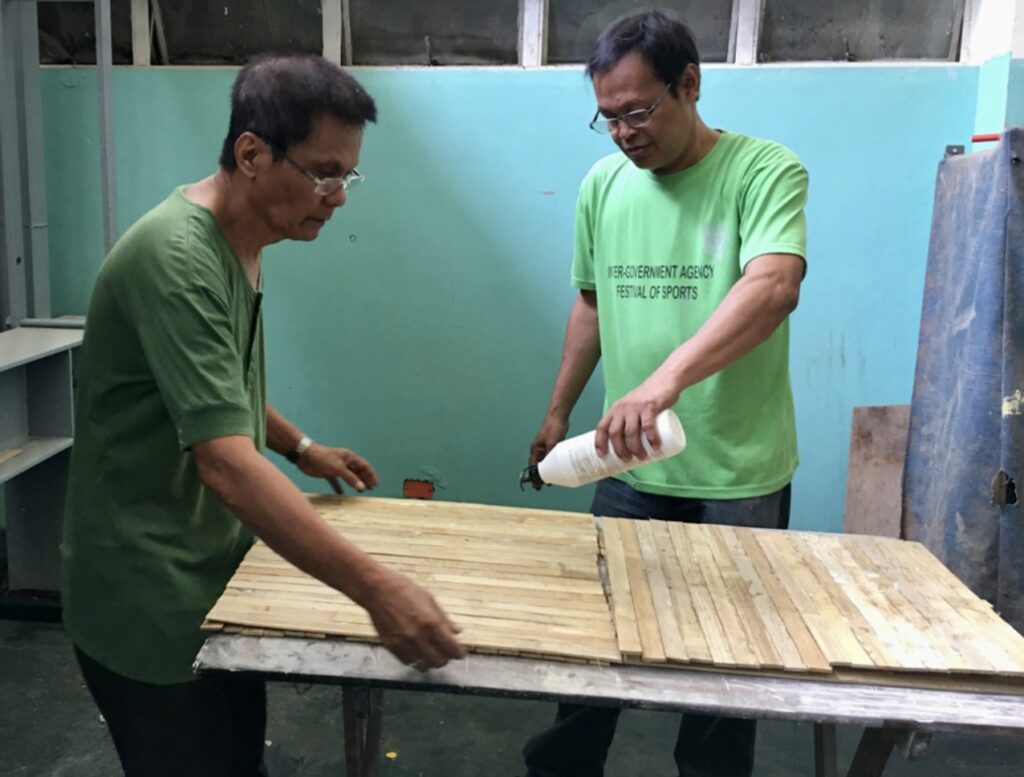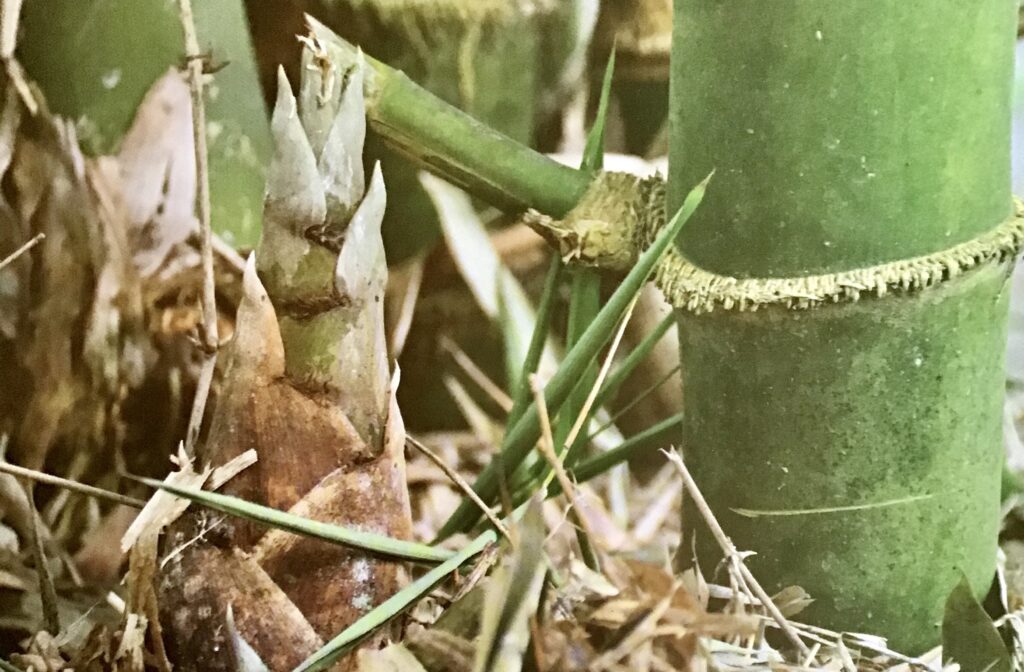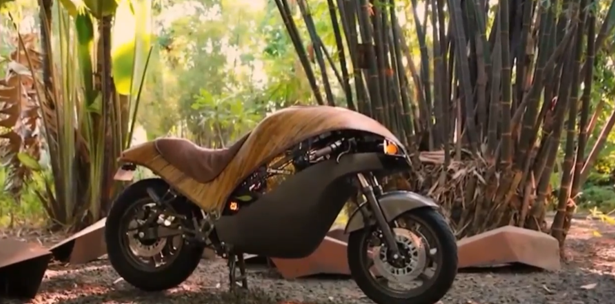By Henrylito D. Tacio
When it comes to bamboo, there are so many things going on. For one, Filipino researchers are one step closer to understanding engineered bamboo.
“Engineered bamboo refers to various kinds of composite boards that come from processing raw bamboo,” explains Dr. Rico J. Cabangon, deputy director of the Forest Products Research and Development Institute (FPRDI) of the Philippine Council for Agriculture, Aquatic and Natural Resources Research and Development (PCAARRD).
Several layers of bamboo strips or slats are glued together and pressed to form boards that can be used for specific purposes – furniture, decors, and house parts such as walls, doors, ceilings, and floors. Engineered bamboo panels are often stronger and less prone to warping than equivalent solid woods.
One type of engineered bamboo is cross-laminated bamboo (CLB), which has been found to be a promising construction material.
In a recent study, a team of FPRDI researchers measured the strength of CLB made from two local species, “kawayan tinik” (scientific name: Bambusa espinosa) and giant bamboo (Dendrocalamus asper).
“We produced CLB by gluing layers of bamboo slats on top of each other, with the grain of adjoining layers running in opposite directions. This type of lamination gives the board strength in two directions,” said Christian Camacho, the study project leader.
“The results were encouraging: our CLB met the strength requirements of some cross-laminated timber products. Their density, hardness, and bending strength are promising for load-bearing walls, floors, and ceilings,” he added.
According to Camacho, the cross-laminated timber (CLT) – an innovative panel currently gaining attention around the world – has inspired him to study CLB.
“With the local housing demand currently at an all-time high, there is space for CLB in the Philippine building industry, especially in prefabricated housing,” Camacho said. “In the United States alone, the demand for prefab houses is expected to reach 145,000 units next year. This makes CLB a potential exportable construction material.”
This is indeed good news. Made from a fast-growing, renewable resource, CLB can help provide livelihood and extra source of income to local bamboo farmers and other players in the bamboo industry.
Another good source of income for bamboo farmers are the bamboo shoots. “Bamboo shoots are palatable and rich in nutritional values,” wrote Eirene Grace Z. Arcayos in The PCAARRD Monitor. “They have numerous potential health benefits – improve appetite and digestion, reduce fat, and lower cholesterol.”
The Philippines is home to 62 bamboo species, 21 of which are endemic. Aside from the two species mentioned earlier, the other economically important species are “bayog” (Dendrocalamus merillianus) and “kawayan kiling” (Bambusa vulgaris). The shoots of these four bamboos can be consumed as food.
Partnering with the Pampanga State Agricultural University, PCAARRD – a line agency of the Department of Science and Technology (DOST) – conducted a livelihood project entitled, “Enhancing Bamboo Shoot Production and Product Development through S&T Intervention.”
Among the new products the project developed include bamboo shoots as ingredients in veggie salad, baked sushi, and maki roll; pickles; muffin; oatmeal cookies; fresh lumpia; and ice cream.
Meanwhile, the Philippine Bamboo Industry Development Act (PBIDA) is seen to establish the country’s competitive edge in the natural bamboo market in transport, construction, furniture, and fabric sectors that can lead to industrial-manufacturing development.
Filed under House Bill 9576 which was approved for the third and final reading in August 2021, PBIDA is hoped to be certified as urgent by the administration of President Ferdinand R. Marcos Jr.
“House Bill 9576 should be approved under the administration of BBM (Bongbong Marcos). It will substantially help advance our industrial development. We already have the clumps in our inventory. We just need the support for production, training, processing,” said Deogracias Victor “DV” B. Savellano.
Savellano leads private sector advocates of bamboo as nature-friendly, climate smart industrial material through the 5K (Kawayan: Kalikasan, Kabuhayan, Kaunlaran, Kinabukasan) Foundation Inc.
HB 9576 will be refiled by Bohol Representative Edgardo M. Chatto. It will be endorsed in the Senate by the House of Representative. The bill which envisions seizing part of a global market placed in 2010 at $8 billion will institutionalize the Philippine Bamboo Industry Development Council (PBIDC).
Created by Executive Order 879 in 2010, PBIDC saw the prospect of bamboo replacing plastic, metal, and other wood as manufacturing input.
The bamboo industry holds huge economic potential for contributing to industrialization, being a highly-durable and ecologically-friendly raw material.
Industry players said bamboo is comparable to or even better than other hardwood. In fact, bamboo has already been technologically developed into engineered wood, composites, laminated wood, or strand woven bamboo as sophisticated lumber or construction material.
Filipinos have extensively exhibited their creative genius in using bamboo. One such genius is Christopher Paris Lacson, the man who designed the electric bike (EB) brand-named “Banatti” that uses innovative, environmentally sustainable bamboo.
Speaking in an “Usapang Kawayan” bamboo forum, Lacson said the trendy motorcycle is just the beginning of a highly promising sector that has the potential to catapult Philippines to industrialization.
“A bike like this can inspire the young, the leaders, the countrymen, and the industries to say ‘Kaya pala yan’ (It can be done!),” pointed out Lacson. “It’s not (just) about making money. It’s about making us proud. We can have our own. We’re creative. We’re smart. We’re intelligent.”
The team that developed the Banatti Green Falcon chose to use bamboo as “it is the mandate of the country.” As Lacson explained, “This God-given super grass is one of our tickets out of poverty. When people see a picture of the Banatti Green Falcon, it brings an incredible feeling. Something goes on in their mind, something shifts.”
A news item released by PBIDC said the Philippines now has an estimated bamboo area of around 104,000 hectares. It generates a value of $60 million yearly. With 5.59 million hectares of arable land, the country can expand bamboo area to 400,000 hectares – if only to level up to at least 10% of China’s bamboo area of 4.2 million hectares.
Such an area can yield a whopping $3 billion (P150 billion). The industry can employ one million rural folks including indigenous people that can be organized into cooperatives.
Each 10-hectare area can generate a net income of P922,995 per bamboo worker per year, according to a study of the International Network for Bamboo and Rattan (INBAR).
Growing bamboo is also good for the environment. For one, it fights climate change in several ways, INBAR said.
First, its fast-growing trait enables it to sequester carbon more substantially than other plants. It releases 35% more oxygen than other trees. Bamboo plants sequester 12 metric tons of carbon per hectare annually.
“Durable products made from bamboo can also be potentially carbon-negative. Bamboo could also be a favorable substitute for hardwoods, even FSC (Forest Stewardship Council)-certified ones,” PBIDC said.
For another, bamboo can also replace fossil fuels and reduce deforestation. Its solid biomass is used for cooking (charcoal and briquettes) and it can be converted into pellets for electricity and heating.
But what is more interesting is that bamboos are harvestable throughout the year, thus providing a stable rural income. – ###
Photo captions:
1. This is Christoper Paris Lacson’s Green Falcon Banatti bamboo motorcycle. (PBIDC)
2. Bamboo shoots are becoming popular not only in the Philippines but in other countries as well. (PCAARRD)
3. Two researchers preparing the cross-laminated bamboo. (PCAARRD)



